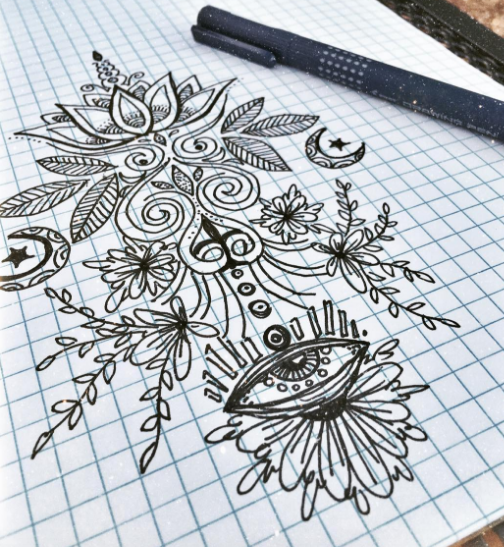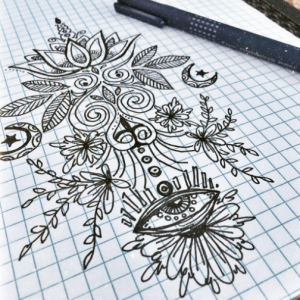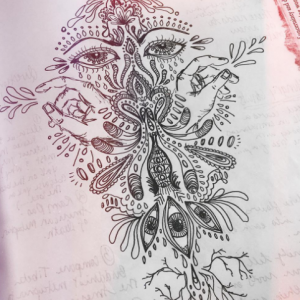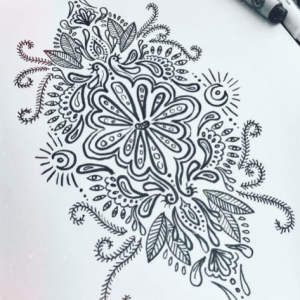Zendoodling for Your Health and Happiness!
By Cait Deane
The act of zendoodling is a simple pathway to relaxation and inner focus.
If you are someone who has avoided the adult coloring book craze or have not heard of this activity before, you may be asking yourself, what is “zendoodling?”
Zendoodling is the act of creating a repetitive, meditative pattern as a method to relax. For many, including myself, it is a thinking tool. Studies have even shown that people who draw or zendoodle while in classes, meetings, and phone conferences are often better listeners that retain more information. Not only is it an easy outlet for creativity, but it is also helping your brain remain active while you listen!
I’m someone who is in the school of thought that meditation can be one of the best ways to clear your mind and bring tranquility into your life, even if it is just in the form of a once-a-day dose of peacefulness! However, I also have always struggled to completely turn off my active mind and focus on nothing but my breath and presence. This is where zendoodling has entered my life as a productive alternative to totally tuning out. Focusing on the simple act of filling a space with non-representational doodles has become a way to emerge myself in leisure and become more aware of my own presence.
Now that you have a little background on the art of the zendoodle, we can dive into getting started! So grab your favorite pen and paper and get ready to sit back, relax, and doodle.
Part of the beauty of Zendoodling is the free-spirited nature of it. For my own creations, I like to begin with a more solid/ structured ‘starting point.’ My personal preference is typically flowers, because they are easy to draw and cheerful. However, many people who practice meditative drawing like to kickoff their doodle sessions with more abstracted symbols. It is recommended for people who are just starting to get into zendoodling to try drawing several empty shapes and just begin filling them in with whatever smaller shapes, lines, and textures seem to flow the best for them! The most important part of the process is that it stays simple, and relaxing- getting too caught up in how a doodle is turning out or whether you think it looks sophisticated enough really deteriorates zendoodling’s core value, which is offering the artist a moment of relaxation and clarity.
Once you have your starting point or empty shapes, you can begin to accentuate them. I have the preference of working in a radial pattern, like a traditional mandala, and then finding variation to play off of in the natural abnormality of my lines. Try drawing tiny shapes around a bigger shape, curly-doodads, or concentric circles.
To reiterate the importance of the simplistic nature of the patterns, I will remind you of a quote from one of my all time favorite joyful artists, Bob Ross: “We don’t make mistakes, just happy little accidents.” This is especially true in meditative drawing- when one of your lines organically becomes longer or more spaced out than another- it is an opportunity to play with that pattern and introduce a new one, filling the space. Just as naturally as your zendoodle commenced, you can end it at whatever time feels best for you- the end of your conference, the end of your break, or when you just can’t fit another squiggle on the page!
Meditative drawing can help engage your brain so you never let your centers for creativity get too dusty. Artist or not, regardless of your skill level- taking time out of your busy life to try a new activity zendoodling can make you more relaxed, a more acute listener, boost your self esteem, and add a spark of inspiration into your life!










